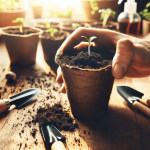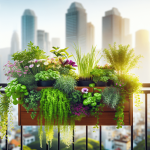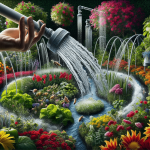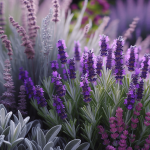This post may contain affiliate links. As an Amazon Associate, we may earn commissions from qualifying purchases.
If you find yourself with limited space but a strong desire to garden, fear not! There are countless creative ways to maximize your gardening potential, no matter how small your space may be. From vertical gardens to hanging baskets and even repurposing household items, there are endless possibilities to transform even the tiniest corner into a green oasis. In this article, we will explore some innovative ideas to help you make the most of your limited gardening space and bring life and vibrancy to your surroundings. So, get ready to roll up your sleeves and get your hands dirty as we embark on this exciting journey of gardening in small spaces. Gardening is a wonderful hobby that allows you to connect with nature and enjoy the beauty of plants. However, limited space can often pose a challenge when it comes to pursuing this hobby. Don’t worry, though, as there are plenty of creative ways to maximize your gardening potential even in small spaces. In this article, we will explore various techniques and ideas for vertical gardening, container gardening, window sill gardening, balcony gardening, tiered gardening, rooftop gardening, indoor gardening, community gardening, microgreens and sprouts, as well as hydroponics and aquaponics.
Vertical Gardening
Using hanging pots
If you have limited floor space or want to utilize the vertical area in your garden, hanging pots are a great option. You can hang pots from a sturdy overhead structure such as a pergola or an archway. This not only adds visual interest but also allows you to grow a variety of plants. From vibrant flowers to trailing vines, the possibilities are endless. Hanging pots are easily accessible, and they create a stunning display that adds a touch of charm to any garden.
Creating a vertical wall garden
Another excellent way to make the most of limited space is by creating a vertical wall garden. This involves attaching planters or containers to a wall or fence, allowing plants to grow vertically. You can use a variety of containers, such as PVC pipes, pallets, or even repurposed gutters. This method not only saves space but also adds a striking visual element to your garden. Plus, it’s a great way to grow herbs, leafy greens, or small flowers.
Using a trellis for climbing plants
If you enjoy growing climbing plants such as beans, peas, or morning glories, using a trellis is an excellent option. A trellis provides support for the plants to grow vertically, saving space and adding height to your garden. You can either purchase a ready-made trellis or construct one yourself using materials like bamboo stakes or wire mesh. Not only does a trellis help conserve space, but it also creates a delightful green wall in your garden.
Container Gardening
Choosing the right containers
When it comes to container gardening, choosing the right containers is essential. Opt for containers that are suitable for the size of the plants you want to grow. For larger plants, use deep containers that allow proper root development. Additionally, ensure that your containers have drainage holes to prevent waterlogging. Consider using materials like terracotta, plastic, or fabric containers, depending on your specific needs and preferences.
Using hanging baskets
Hanging baskets are a fantastic way to add greenery to your garden without taking up valuable floor space. They can be suspended from hooks, railings, or even branches, creating a stunning display of trailing plants and flowers. Hanging baskets are available in various materials, styles, and sizes, making it easy to find the perfect ones for your garden. Whether you choose to grow cascading flowers or lush foliage, hanging baskets add a touch of elegance to any garden setting.
Stacking containers vertically
If you want to make the most of limited space, consider stacking containers vertically. This involves using shelving or racks to stack different-sized containers on top of each other. You can grow a variety of plants in these stacked containers, from herbs and vegetables to flowers and succulents. This technique not only saves space but also creates an eye-catching arrangement that adds charm to any small garden or balcony.
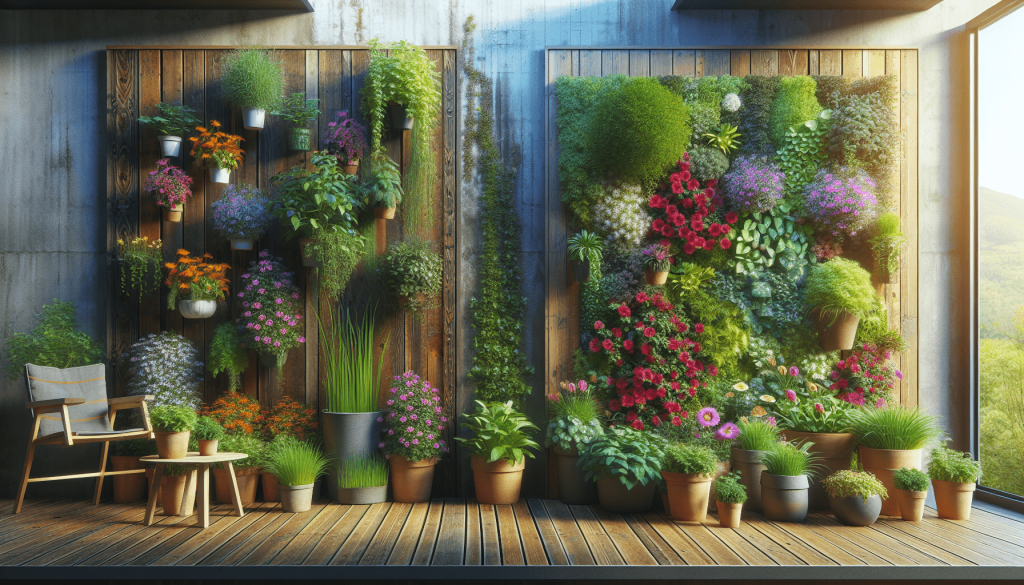
Window Sill Gardening
Growing herbs in small pots
One of the easiest and most rewarding ways to utilize limited space for gardening is by growing herbs on your window sill. Herbs like basil, parsley, and mint thrive in small pots and provide you with a constant supply of fresh flavors for your culinary endeavors. Keep the pots within reach of natural sunlight, and remember to water them regularly. With a little care, you can create a lush herb garden right in your kitchen.
Using window boxes for flowers
Window boxes are a classic choice for bringing color and beauty to your windowsills. These shallow containers can be easily attached to the outside of your windows or placed on your indoor sill. Fill them with your favorite flowers, such as petunias, marigolds, or pansies, and enjoy a vibrant display of blooms right outside your window. Window boxes not only add visual appeal but also help to soften the exterior of your home.
Planting succulents or small vegetables on the windowsill
If you’re looking for low-maintenance options, consider planting succulents or small vegetables on your windowsill. Succulents are hardy plants that require minimal care and can thrive in small pots or containers. You can also experiment with growing small vegetables like cherry tomatoes, lettuce, or peppers. Imagine plucking fresh produce from your own windowsill garden to use in your daily meals. It’s a rewarding and space-efficient way to grow your own food.
Balcony Gardening
Hanging planters on the railing
If you have a balcony, hanging planters on the railing is an excellent way to create a green oasis in a small space. There are several types of planters designed specifically for balcony railings, so finding ones that suit your needs won’t be a problem. Fill them with colorful flowers, cascading vines, or even small herbs and vegetables. Not only will this add beauty to your balcony, but it will also attract birds and butterflies, bringing nature closer to you.
Vertical pallet garden on the balcony wall
Another unique balcony gardening idea is to create a vertical pallet garden on your balcony wall. Pallets can be easily repurposed into a vibrant green wall by attaching small pots or containers to the pallet’s slats. Fill them with a variety of plants like herbs, trailing flowers, or succulents. This DIY project not only saves space but also acts as a privacy screen and a focal point for your balcony.
Using planter boxes for compact plants
Planter boxes are versatile and can be used in a variety of settings, including balconies. These long, narrow containers can be placed along the edge of your balcony, providing space for compact plants like herbs, lettuce, or strawberries. You can also hang planter boxes from the railing to maximize your growing area. Enjoy fresh herbs or salad greens just steps away from your living space with this simple and space-saving solution.
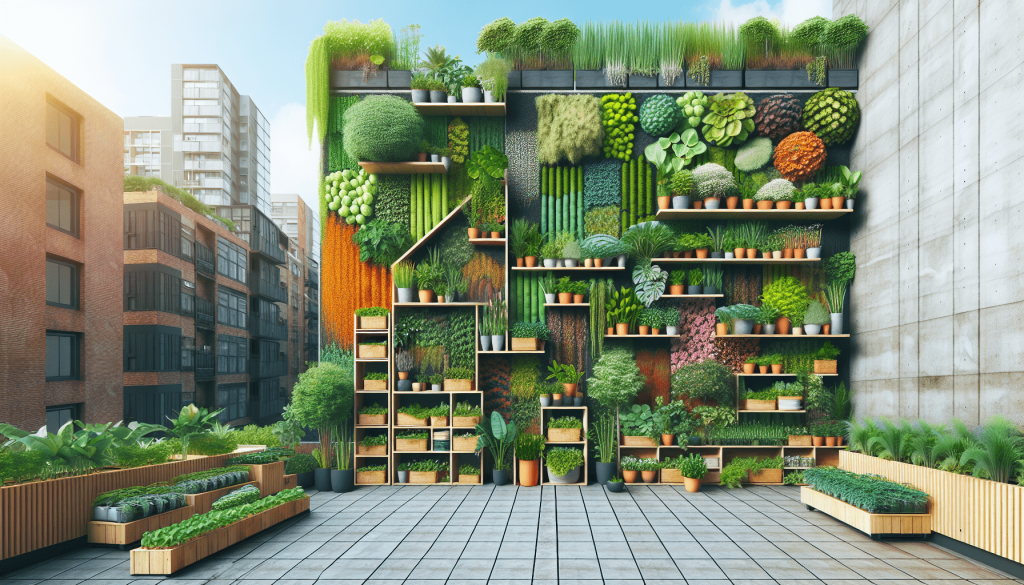
Tiered Gardening
Using tiered plant stands
When it comes to tiered gardening, using plant stands is a practical and aesthetic choice. Tiered plant stands allow you to maximize your vertical space while creating an appealing display of different plants. You can choose stands made from various materials, such as wood, metal, or plastic, to suit your personal style and garden theme. From cascading flowers to potted herbs, tiered plant stands provide a delightful way to organize and showcase your plant collection.
Creating a pyramid garden
For a unique and visually striking tiered garden, consider creating a pyramid garden. This involves arranging planters or individual containers in a pyramid shape, with each tier gradually decreasing in size. Fill the planters with your favorite plants, such as flowering annuals or small shrubs, to create a stunning display that is sure to catch the eye. A pyramid garden is not only a space-saving solution but also an artistic focal point in any garden setting.
Stacking shelves for different plants
If you have limited floor or ground space, stacking shelves can be an excellent solution for tiered gardening. These shelves, made of wood or metal, can be stacked vertically, providing multiple levels for various plants. You can organize your plants based on their light requirements or even create themed shelves, such as a succulent shelf or an herb shelf. Stacking shelves not only save space but also allow you to showcase a diverse range of plants in an organized and structured manner.
Rooftop Gardening
Building raised beds on the rooftop
Utilizing your rooftop for gardening is a fantastic way to maximize space in urban environments. One method is to build raised beds on the rooftop. This involves constructing wood or metal frames and filling them with rich soil. Raised beds provide optimal growing conditions for a variety of plants, from vegetables to flowers. Just ensure that your rooftop can handle the weight and that you have proper drainage in place. Rooftop gardening not only utilizes unused space but also provides a peaceful oasis in the city.
Using hanging planters from the ceiling
If you have limited floor space on your rooftop, using hanging planters from the ceiling is a clever solution. You can suspend planters from sturdy overhead structures or even install hooks or wires on the rooftop. This technique allows you to grow a variety of plants while saving valuable floor space. From trailing vines to flowering baskets, hanging planters create a picturesque rooftop garden that makes the most of vertical space.
Designing a rooftop garden layout
When it comes to rooftop gardening, designing a proper layout is crucial. Consider factors such as sunlight exposure, wind patterns, and water access. Plan your garden in zones, separating areas for different types of plants or themes. Incorporate seating areas or pathways to create an inviting and functional rooftop garden. By carefully planning the layout and utilizing vertical space, you can transform your rooftop into a tranquil retreat amidst the hustle and bustle of the city.
Indoor Gardening
Setting up a vertical herb garden in tight spaces
Indoor gardening is an excellent option for those with limited outdoor space. To make the most of tight spaces, consider setting up a vertical herb garden. You can utilize wall space by attaching wall-mounted planters or even repurposing a shoe organizer with several pockets. Hang the planters or organizer near a window where the herbs can receive adequate sunlight. This vertical arrangement not only saves space but also allows you to have fresh herbs conveniently located in your kitchen.
Using wall-mounted planters
Wall-mounted planters are a practical and aesthetic addition to any indoor space. These planters can be easily attached to walls, allowing you to grow a variety of plants without taking up valuable floor space. From cascading ivy to colorful flowers, wall-mounted planters add a touch of greenery and visual interest to any room. Place them in living areas, hallways, or even bathrooms to create a calming and natural ambiance.
Utilizing shelves or bookcases for plants
Shelves and bookcases provide an excellent way to showcase and grow plants indoors. Utilize the shelf space by placing pots or containers with different types of plants. You can create a visually appealing display by arranging plants based on their height, leaf color, or growth habit. Additionally, using bookcases with adjustable shelves allows you to accommodate plants of varying sizes. Transform your home into a lush indoor garden by utilizing existing shelving or investing in freestanding bookcases.
Community Gardening
Participating in communal garden plots
Community gardening is a fantastic option for those who don’t have access to their own garden but still want to grow their plants. Many communities offer communal garden plots, where individuals can rent or volunteer in exchange for a gardening space. Participating in communal garden plots allows you to connect with fellow gardeners, share knowledge, and enjoy the benefits of fresh produce. It’s a wonderful way to make the most of limited space and foster a sense of community.
Sharing garden space with neighbors
If you have limited space in your own garden, consider sharing garden space with your neighbors. Collaborate with them to create a shared garden where each person can grow their favorite plants. Dividing the space and responsibilities allows everyone to enjoy the benefits of gardening and make the most of limited space. Sharing garden space with neighbors not only fosters a sense of community but also creates a diverse and vibrant garden.
Joining a local gardening club or organization
Joining a local gardening club or organization is an excellent way to maximize your gardening potential in limited space. These clubs often have access to shared spaces or allotments where members can grow their plants. Additionally, being part of a gardening club allows you to learn from experienced gardeners, share tips and tricks, and participate in workshops or events. It’s a great way to expand your knowledge, meet like-minded individuals, and make the most of limited space for gardening.
Microgreens and Sprouts
Growing microgreens in small containers
Microgreens are young, tender seedlings that are harvested just a few weeks after germination. These tiny greens are packed with flavor and nutritional value, making them a popular choice for homegrown produce. To grow microgreens in limited space, use small containers such as shallow trays or seedling flats. Fill these containers with a thin layer of potting soil or a seed-starting mix. Sprinkle the seeds evenly and cover them with a thin layer of soil. Keep the containers in a sunny spot and mist them regularly. In just a few weeks, you’ll have a harvest of delicious microgreens to enjoy.
Creating a sprouting setup in the kitchen
Sprouts are another wonderful option for limited space gardening, especially in the kitchen. Sprouts are different from microgreens as they are harvested just a few days after germination, before the plant develops true leaves. To create a sprouting setup, use glass jars or trays with drainage holes. Rinse the seeds thoroughly and soak them in water overnight. Drain the water and spread the seeds evenly in the containers. Rinse the seeds twice a day and keep them in a warm, dark spot. Within a few days, you’ll have fresh and crunchy sprouts to add to your salads or sandwiches.
Harvesting fresh sprouts for salads or sandwiches
One of the greatest advantages of growing microgreens and sprouts is the ability to harvest fresh produce right in your kitchen. Once your microgreens or sprouts have reached the desired size, gently harvest them with scissors or by pulling them carefully from the soil. Rinse them thoroughly and enjoy the crisp and flavorful greens in your salads, sandwiches, or as a garnish for your dishes. With microgreens and sprouts, you can have a constant supply of fresh and nutritious greens regardless of limited space.
Hydroponics and Aquaponics
Setting up a hydroponic system with limited space
Hydroponics is a soilless gardening technique that allows plants to grow in a nutrient-rich water solution. This method is an excellent option for limited space as it eliminates the need for soil. To set up a hydroponic system in a small area, consider using vertical towers or vertical A-frame structures. These systems maximize vertical space while allowing plants to thrive. You’ll need a nutrient solution, grow lights, and a suitable growing medium such as perlite or coconut coir. With a properly designed hydroponic system, you can enjoy year-round gardening even in the smallest of spaces.
Creating a small-scale aquaponics setup
Aquaponics combines hydroponics and aquaculture, creating a symbiotic system where plants and fish mutually benefit each other. Despite the perception of requiring large-scale setups, aquaponics can also be implemented on a small scale. A small aquarium stocked with a few fish can serve as the base for growing plants in a hydroponic bed above or beside the tank. The fish waste provides natural nutrients for the plants, while the plants filter the water and create a healthy environment for the fish. With a small-scale aquaponics setup, you can grow fresh produce while enjoying the beauty of a small fish tank.
Growing plants without soil in a controlled environment
Hydroponics and aquaponics are both excellent methods for growing plants without soil. These techniques provide precise control over the growing conditions, including nutrient levels, pH, and water availability. With limited space, hydroponics and aquaponics allow you to grow a variety of plants, from leafy greens to herbs and even fruiting crops. By eliminating the need for soil, you can make the most of any small area and enjoy the benefits of year-round gardening in a controlled and efficient environment.
In conclusion, having limited space shouldn’t discourage you from pursuing your gardening dreams. From vertical gardening and container gardening to window sill gardening and balcony gardening, there are numerous creative ways to utilize smaller areas for growing plants. Tiered gardening, rooftop gardening, indoor gardening, community gardening, and even hydroponics and aquaponics offer exciting opportunities to make the most of limited space. So, no matter the size of your garden or the constraints you face, use these ideas to transform your space into a lush and thriving oasis. Happy gardening!


